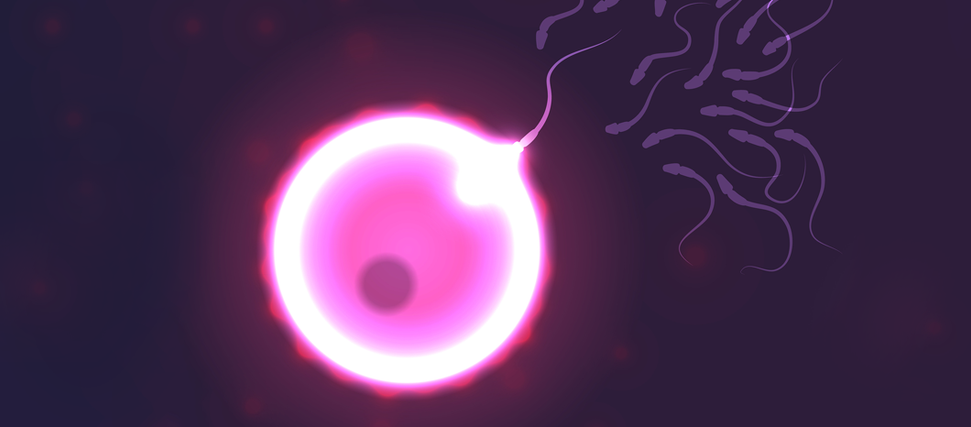Conception and Pregnancy
The dynamics of conception and pregnancy are complex - from the fertilization of the egg by a single sperm to the implantation of the embryo in the uterine wall.
Ovulation: FSH and LH
To begin, let's review the process leading up to ovulation, covered in other areas of our site (click the "preconception" category above for more). Ovulation is defined as the separation of the egg from the ovarian follicle. Leading up to this, there is a complex interplay of female reproductive hormones (follicle stimulating hormone and luteinizing hormone) that cultivates the ovum and then facilitates the release of the ovum. Once the egg separates from the follicle, it is swept into the fallopain tube and fertilization must take place within a day or so, as the egg will begin to disintegrate within 24 hours. Therefore, the sperm must be waiting in the womb or fallopian tube... Hence, the central importance of ovulation prediction and timing intercourse.
How Does Conception Take Place?
Sperm Ejaculation and Transport
Following ejaculation, the sperm must transport themselves through the cervix and into the womb or uterus. Successful sperm transport requires 1) healthy, motile sperm 2)a fertile environment in the vagina and cervix, which depends on fertile cervical fluid (non-hostile cervical mucus) 3) Capacitation: the ability of the sperm to convert themselves to a form in which they become capable of penetrating and fertilizing the egg.
Interestingly, once ejaculation occurs, the semen forms a protective layer or gel around the sperm. The protected sperm with the highest degree of motility transport themselves through the fluid medium of cervical mucus (some women currently use a product called Baby Dance Fertility Lubricant that emulates fertile cervical fluid and has the identical osmolarity as semen) - and ultimately through the cervix into the uterus.
During a woman's most fertile time, around ovulation, the cervical "interface" that typically protects the uterus now becomes less inimical to sperm and offers a more fertile medium of transport. The cervical mucus becomes thinner and less acidic and the position of the cervix drops measurably. Women who fertility chart often observe these changes in their cervical fluid and in position of the cervix as indicators of fertile or infertile periods. Once the sperm enter the womb, the uterus contracts and helps propel the sperm into the fallopian tubes, which are located above.
Egg "Pick Up" and Fallopian Transport
Egg transport begins at ovulation and ends once the egg reaches the uterus. Following ovulation, the end of the fallopian tube moves over the ovary. Cilia (hairlike structures) brush, pick up, or encourage the movement of the ovum from the ovary and into the fallopian tube. Movement through the fallopian tube takes about a day - including a "resting state" in the tube which may allow the egg to fully develop or prepare itself for fertilization. And for fertilization to take place, the sperm must already be present during this time frame. The egg further descends to the uterus. If there are problems or obstacles during the transport process, one problematic consequence may be a tubal pregnancy (or ectopic pregnancy).
Fertilization: "In da Zona Pellucida, Baby..."
Following ovulation, the egg is capable of being fertilized for approximately 12-24 hours. Fertilization usually occurs in the widest part of the fallopian tube, nearest the uterus. Any contact or meeting between the egg and sperm is by random chance - there is no reproductive teleology during this aspect of fertilization. Here, the zona pellucida (the membrane surrounding the ovum) helps precipitate fertilization by exhibiting "sperm receptors". Once the zona pellucida membrane has been penetrated by a sperm, it acts as a shield so that penetration by other sperm is no longer possible. Following penetration of the sperm into the ovum, the egg is fertilized and becomes an embryo. However, cell division and implantation of the egg must take place for conception to be successful.
Implantation of the Egg and Implantation Bleeding
Once the embryo attains the blastocyst stage a few days after fertilization, it begins the process of implantation. Implantation is the process of the embryo attaching itself to the uterine wall or uterine lining. Some women may experience a phenomenon called implantation bleeding, which is typically a brown discharge that may result in light spotting. If implantation is successful, the developing placenta will begin to produce the hormone hCG. This is the hormone detectable by home and clinical pregnancy tests.









